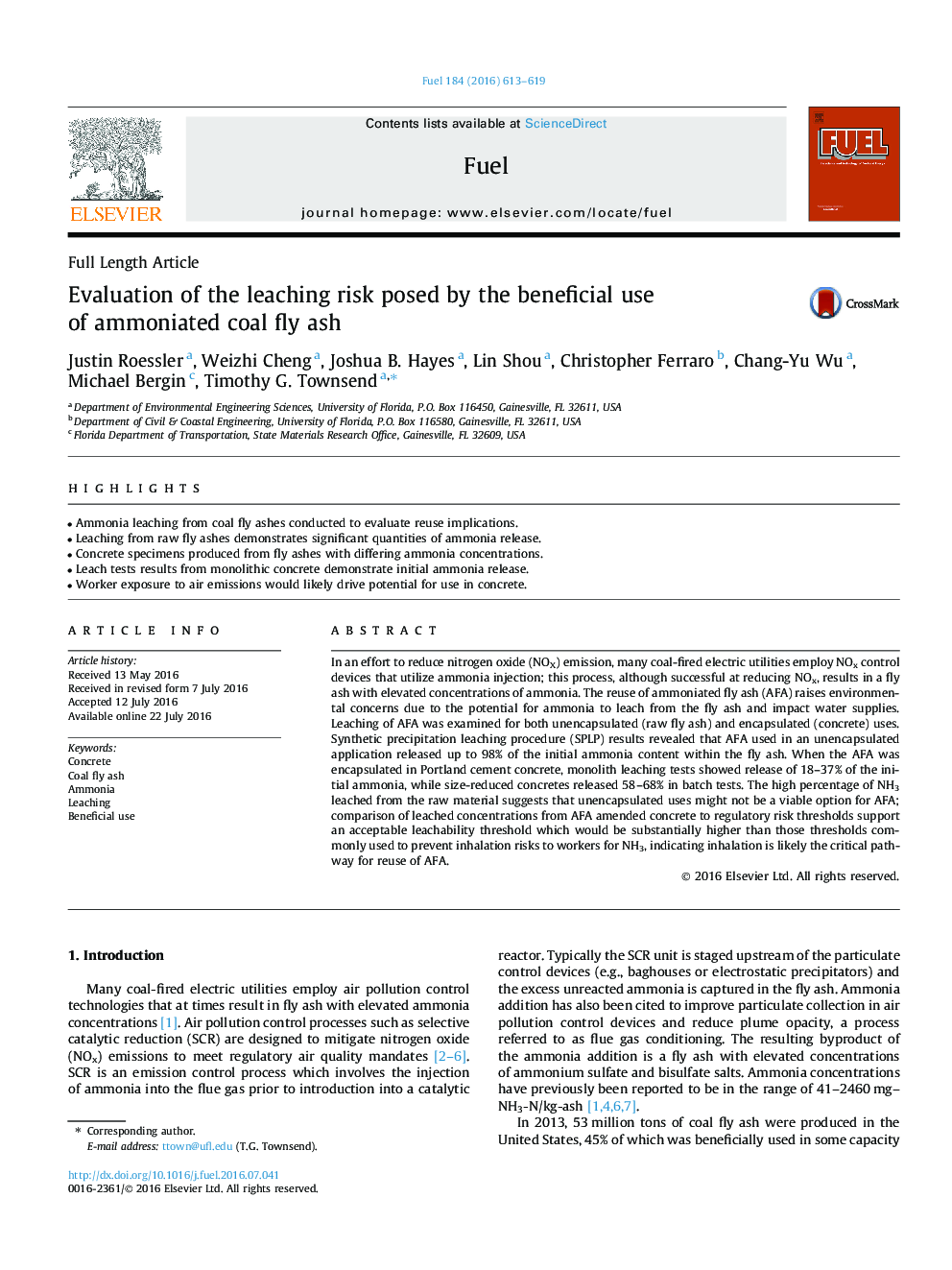| Article ID | Journal | Published Year | Pages | File Type |
|---|---|---|---|---|
| 6633096 | Fuel | 2016 | 7 Pages |
Abstract
In an effort to reduce nitrogen oxide (NOX) emission, many coal-fired electric utilities employ NOx control devices that utilize ammonia injection; this process, although successful at reducing NOx, results in a fly ash with elevated concentrations of ammonia. The reuse of ammoniated fly ash (AFA) raises environmental concerns due to the potential for ammonia to leach from the fly ash and impact water supplies. Leaching of AFA was examined for both unencapsulated (raw fly ash) and encapsulated (concrete) uses. Synthetic precipitation leaching procedure (SPLP) results revealed that AFA used in an unencapsulated application released up to 98% of the initial ammonia content within the fly ash. When the AFA was encapsulated in Portland cement concrete, monolith leaching tests showed release of 18-37% of the initial ammonia, while size-reduced concretes released 58-68% in batch tests. The high percentage of NH3 leached from the raw material suggests that unencapsulated uses might not be a viable option for AFA; comparison of leached concentrations from AFA amended concrete to regulatory risk thresholds support an acceptable leachability threshold which would be substantially higher than those thresholds commonly used to prevent inhalation risks to workers for NH3, indicating inhalation is likely the critical pathway for reuse of AFA.
Related Topics
Physical Sciences and Engineering
Chemical Engineering
Chemical Engineering (General)
Authors
Justin Roessler, Weizhi Cheng, Joshua B. Hayes, Lin Shou, Christopher Ferraro, Chang-Yu Wu, Michael Bergin, Timothy G. Townsend,
